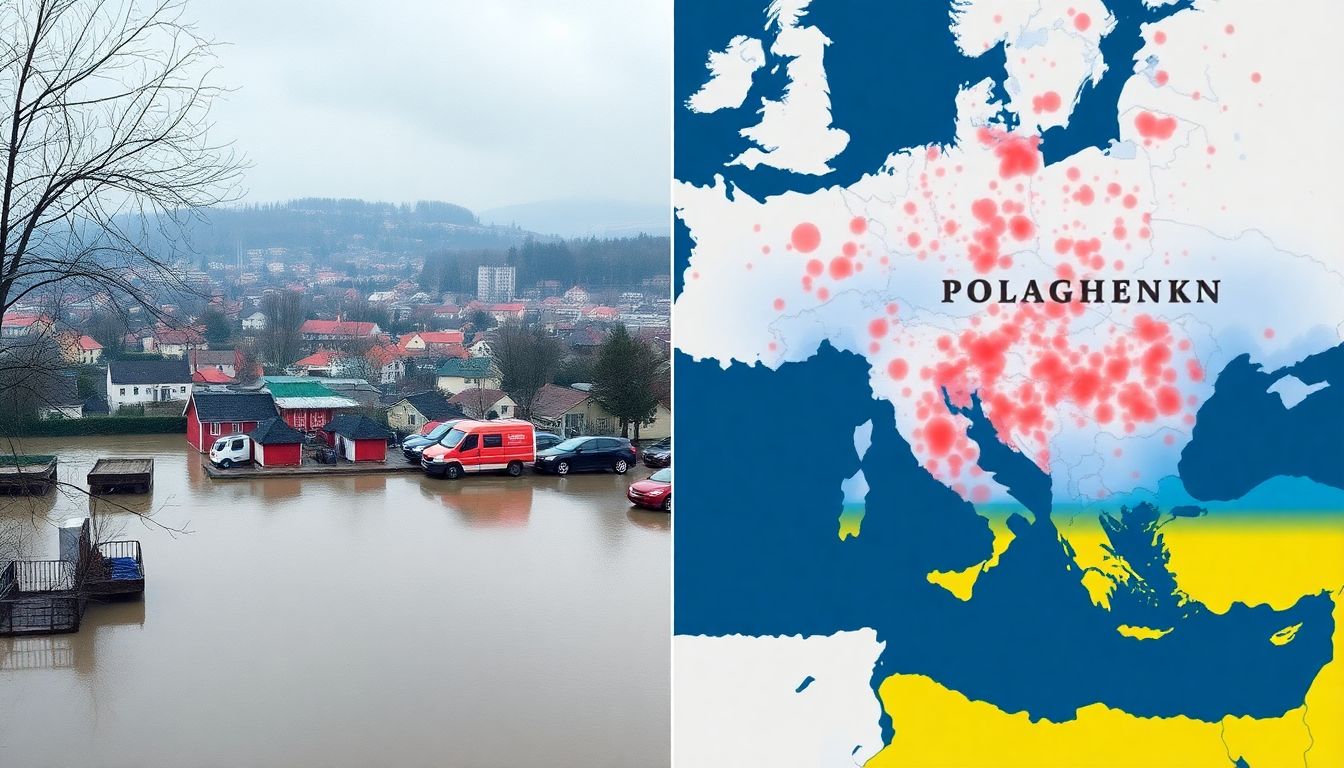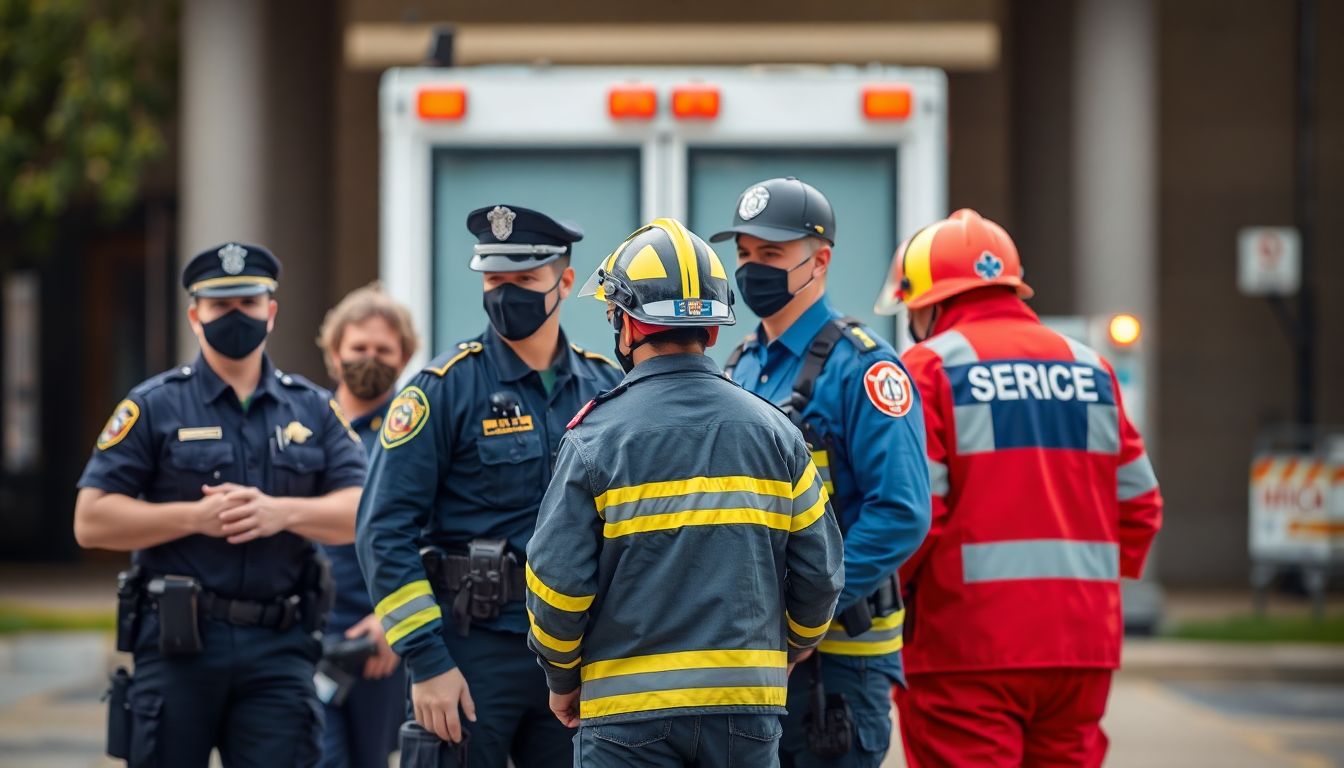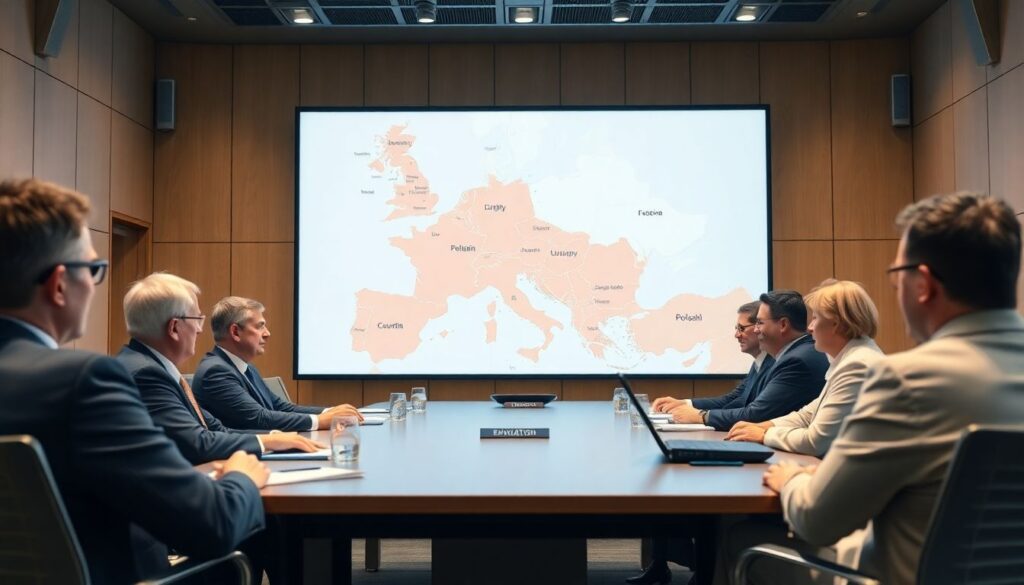In the heart of Europe, Poland is taking proactive measures to safeguard its citizens and cultural heritage in the face of potential natural disasters and military threats. The Polish government has initiated a comprehensive plan to ensure the smooth evacuation of civilians and the protection of national treasures.
A New Bill Aims to Protect Civilians and National Culture Treasures in Poland
In the heart of Warsaw, beneath the grandeur of the Presidential Palace, a group of Poland’s top government officials convene in a secure conference room. The air is thick with a sense of urgency and responsibility, as the large screen behind them displays a vivid map of Poland and its neighboring countries, each border and city name starkly illuminated in crisp, digital detail. The map is not merely a geographical representation; it is a strategic chessboard, where every move could potentially affect millions of lives.
The Prime Minister sits at the head of the table, her eyes scanning the room, taking in the grim expressions of her colleagues. To her left, the Minister of Defense points at the map, his finger tracing potential evacuation routes, each line a lifeline for those in imminent danger. The Minister of Infrastructure and Development chimes in, discussing the logistics of transport, her voice steady despite the weight of their task.
The room is a flurry of activity, yet there is a palpable order to the chaos. Notes are passed, whispers exchanged, and eyes constantly drift to the map, the visual anchor to their deliberations. The map, usually a symbol of national pride, is now a stark reminder of the lives at stake, the territories that could be affected, and the urgency of their task. As the officials discuss the evacuation plans, the weight of their responsibility is as evident as the map behind them, every decision a step towards ensuring the safety of their citizens.

The Impetus for Evacuation Planning
The past few months have been a stark reminder of the importance of evacuation plans, with natural disasters and conflicts forcing thousands to flee their homes. In early July, southern Poland was hit by severe flooding, following days of intense rainfall. The deluge swelled rivers and inundated cities, towns, and villages, leaving thousands of people trapped and in desperate need of rescue. The floods damaged homes, infrastructure, and farmland, highlighting the urgent need for effective evacuation strategies in the face of such catastrophic events.
The flooding in Poland serves as a grim reminder of the power of nature and the necessity of preparedness. As climate change continues to continue, experts warn that such weather events will become more frequent and severe. In light of this, governments around the world are being urged to invest in robust evacuation plans and early warning systems to protect their citizens and minimize the loss of life and property.
Meanwhile, the ongoing war in Ukraine has led to one of the largest displacements of people in recent history. Since the conflict began in late February, millions of Ukrainians have been forced to evacuate their homes, seeking refuge in neighboring countries and across Europe. The crisis has highlighted the need for efficient, large-scale evacuation plans, as well as the importance of international cooperation in managing such situations.
The war has presented unique challenges for evacuation efforts, including:
- The targeting of civilian infrastructure, making safe routes difficult to establish;
- The sheer volume of people requiring assistance, putting immense strain on resources and services;
- The ongoing danger posed by active combat zones, making evacuation efforts highly risky.
As the conflict continues to unfold, governments and aid organizations are working tirelessly to overcome these challenges and provide desperately needed support to those affected.

The New Bill on Protecting Civilians
In the face of increasing natural disasters and global uncertainties, governments worldwide are acknowledging the importance of preparedness. The latest bill, dubbed the ‘Readiness for Evacuation and Disaster Emergencies (REDE) Act‘, is a testament to this proactive shift. This legislation, spanning over 200 pages, outlines comprehensive strategies to enhance national readiness for evacuations and disaster responses.
One of the bill’s core provisions is the ‘Gross National Product (GNP) for Evacuation Readiness‘ requirement. This clause mandates that the government spend a minimum of 1.5% of the annual GNP on evacuation readiness initiatives. This is not just about stockpiling supplies; it’s about investing in infrastructure, technology, and education to ensure every citizen is prepared when disaster strikes.
The spending is earmarked for several key areas to maximize its impact:
- Infrastructure Development: Fortifying evacuation routes, building and maintaining safe shelters, and enhancing communication networks.
- Technological Advancements: Investing in early warning systems, real-time monitoring, and predictive modeling tools.
- Public Education and Training: Implementing nationwide evacuation drills, educational campaigns, and professional training for emergency responders.
- Community Engagement: Encouraging local initiatives, volunteer programs, and partnerships with private organizations to bolster evacuation readiness.
The REDE Act also emphasizes accountability and transparency. There will be annual reports tracking the expenditure and its impact, along with a bipartisan oversight committee. This ensures that every cent spent contributes effectively to the nation’s evacuation readiness, fostering a culture of preparedness and resilience.

Coordinating Civilian Security Services
In the event of an emergency, various civilian security services play pivotal roles in the evacuation process, each with its own set of responsibilities to ensure the safety and well-being of the public. These services include law enforcement, fire and rescue, emergency medical services, and volunteer organizations.
Law enforcement agencies, such as the police, are often at the forefront of evacuation efforts. Their responsibilities include:
- Maintaining order and securing the area
- Directing traffic and managing road closures
- Assisting with crowd control and ensuring public safety
- Coordinating with other agencies for effective communication and response
Additionally, they provide crucial information and updates to the public, helping to minimize panic and confusion.
Fire and rescue services are instrumental in evacuation processes, particularly in cases of fires, natural disasters, or hazardous material incidents. Their key roles include:
- Conducting search and rescue operations
- Providing immediate medical assistance
- Controlling and extinguishing fires
- Managing hazardous materials and mitigating risks
Furthermore, they assess structural safety and assist in the safe evacuation of individuals from affected buildings or areas.
Emergency medical services (EMS) focus on the health and medical needs of those affected. Their primary responsibilities involve:
- Providing on-site medical treatment
- Transporting injured or ill individuals to healthcare facilities
- Coordinating with hospitals for efficient patient care
- Setting up temporary medical facilities if necessary
Moreover, EMS personnel are trained to handle various emergencies, ensuring that medical support is readily available throughout the evacuation process.

Safeguarding National Culture Treasures
The safe evacuation and protection of artworks and other cultural treasures is a critical aspect of disaster management and preservation. In times of conflict, natural disasters, or other emergencies, it is essential to have a well-structured plan in place to safeguard these irreplaceable pieces of history and culture. The first guideline is to have a pre-emptive plan. This involves identifying the risks and potential threats to the collection, whether it’s a fire, flood, or other natural disasters, or even human-induced threats like vandalism or terrorism. Once identified, a mitigation plan should be developed detailing how to minimize these risks.
Next, it’s crucial to prioritize the collection. Not all artworks or cultural treasures can be evacuated at once, especially in urgent situations. Therefore, it’s necessary to have a prioritized list based on the significance, value, and fragility of the items. This list should be regularly updated and agreed upon by a committee of experts. It’s also important to have a detailed inventory of all items, including photographs and condition reports, to ensure everything is accounted for before, during, and after evacuation.
When it comes to the actual evacuation, the keyword is preparedness. Here are some key points to consider:
- Have appropriate packing materials readily available. These should be acid-free and archival quality to prevent any damage during transit.
- Train staff and volunteers on safe handling and packing procedures. Different types of artworks and cultural treasures require different handling techniques.
- Have a pre-arranged safe location to move the collections to. This could be another museum, a secure storage facility, or even an underground vault.
- Ensure that the evacuation routes are clear and that there is adequate transportation available.
Finally, it’s vital to review and update the plan regularly. The evacuation plan should not be a static document. It should be regularly reviewed and updated to reflect changes in the collection, the building, or the potential risks. It’s also important to conduct regular drills to ensure that everyone is familiar with the plan and can act swiftly and effectively in case of an emergency. Regular audits and assessments of the plan can help identify any weaknesses or areas for improvement, ensuring that the artworks and cultural treasures remain protected in the face of any threat.
FAQ
What prompted the need for evacuation plans in Poland?
What percentage of the annual gross national product will be allocated for evacuation readiness?
Which civilian security services will be involved in the evacuation process?
- Police
- Firefighters
- Emergency medical services
- Other relevant civilian security services









